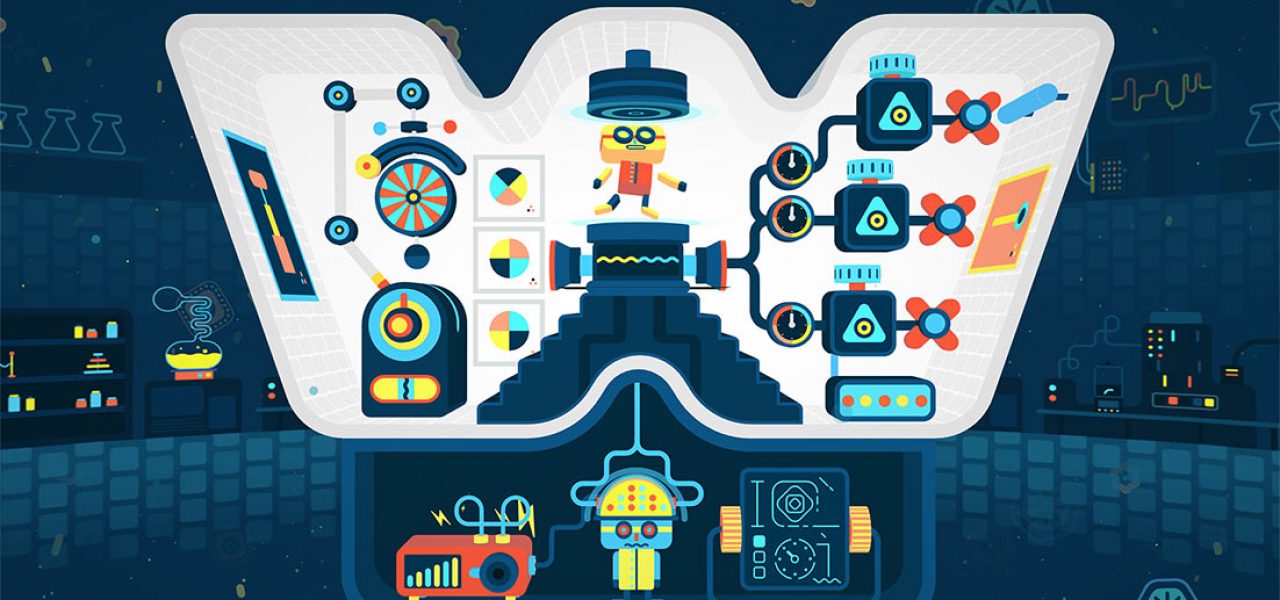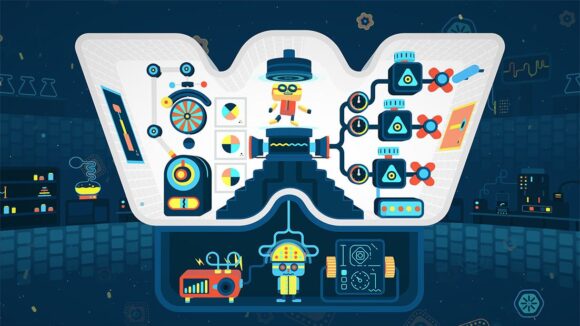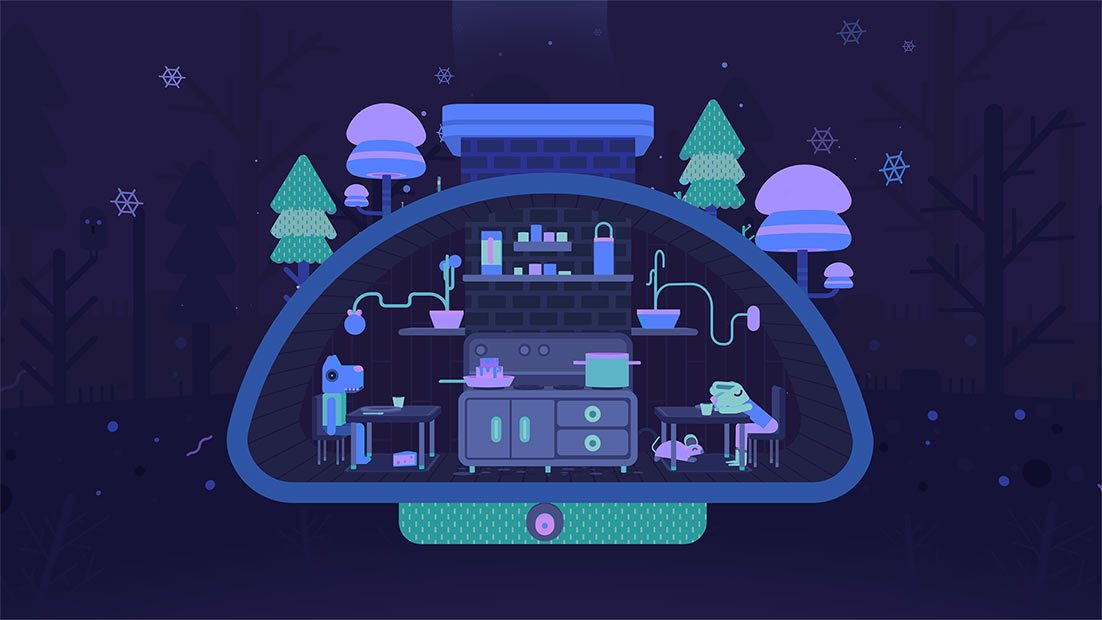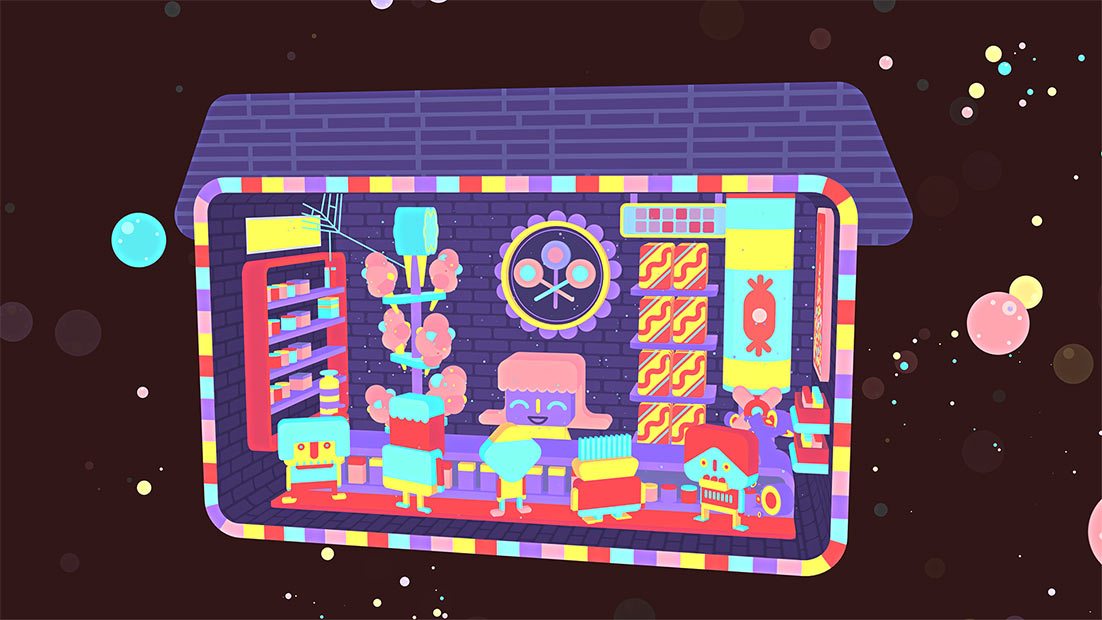

A Game As Unique As GNOG Could Only Emerge From A Studio As Unique As KO_OP
Playing with a toy requires a suspension of disbelief: use your imagination and joyfulness to fill the blanks. A toy never returns to its original state, keeping the memories alive in its shape and material. GNOG follows that same principle, updating it for our digital era, a 21st century toy, if you will.
Trying to define GNOG is impossible. It is what makes GNOG more than a whimsical play on words (Eggnog, get it?).
GNOG is different. GNOG has to be different.
Because the current video game market is a battlezone. Because there’s never been a better time to run beautiful, meaningful experiences on our tired machines. Because the absurd world we live in needs an education in surrealism.
In surface, GNOG is about solving riddles and frolicking inside the head of giant monsters (an echo of the short-lived, genre-breaking online roleplaying game extravaganza Glitch). Exploring the deep playful aspect of interactive storytelling, even if abstracted to the limits of the medium, has proven a rich niche for creative experiences such as Metamorphabet or Hohokum – games leading a wave of an interbreeding of cartoons and games.
In GNOG, the pushing, sliding, rotating mantras act as a plasticity of singular effect. Visually, the flatness has depth, almost emulating a Playskool set on a flat surface, a metaphor for a tactile gameplay that has more to do with curiosity than performance.
The game is composed of nine monster heads with cryptic names like VORT-X or PURP-L, 9 scenes of baffling otherworldliness, and genuine positivity, as well as nine mysteries to solve and unlock through riddles of increasing complexities – secrets abound in this maze of crazy mechanisms and contraptions, asking more than rational thinking.

The player really has to think in dimensionality rather than linearity. The richly textured soundtrack by electronic artist Marskye creates a cozy, intimate sensation – a tiny hip-hop adapting to play and sometimes being remixed by the player through the use of fun level-design. The game ends up being a weird psychedelic journey in expressivity, a warped cosmogony holding more questions than answers.
The narrative of survival
Such a carefully crafted game could only emerge from a quiet, hopeful place. Montreal game studio KO_OP’s survival as a perpetual start-up is somewhat baffling, in a professional world of self-interests and coteries.
Started in a bedroom, the fledging studio expanded into a closet at Concordia University, then to a ramshackle atelier d’artistes in Montreal’s thriving art neighborhood of rue Gaspé : a safe space stuck between a corridor and another start-up. Today, they are sharing neater, cleaner offices in downtown Montreal with another studio, Kitfox Games (of Moon Hunters fame, and ready to release The Shrouded Isle this month).
Despite the apparent adhesion to traditional game studio mythology, KO_OP is in fact a refuge of artists, engaged in the development of GNOG after a series of false starts that taught them how to work together. As is the case for a lot of smaller studios in the world of games, creating a grand opus like GNOG could spell a studio’s doom or a sudden, stratospheric rise.

Koop’s design philosophy also contributes to their singularity — player-driven instead of goal-driven – urging us to reconsider the term “game.” The refusal to engage in the trap of games as art (an already stale debate), the willingness to avoid the traditional pitfalls of gamemaking, like burnout or overthinking processes, are powerful tools.
“Games are a media like no other,” says Saleem Dabbous (@seemo), studio director and co-founder. Yet, GNOG’s makers also understand what the game owes to past expressive arts. “Cartoons changing games, not the other way around,” says GNOG’s main artisan, illustrator Samuel Boucher (@monsieureureka), aware of the affinities between games and cartoons and how they can find in each other the means to survive the onslaught of the algorithmic mindset.
Alongside such Montreal luminaries as the polyvalent artist G.P Lackey (@mousefountain), co-founder/developer Bronson Zgeb (@bzgeb), programmer Nick Rudzicz (@nickfourtimes) and newcomer animator Lucie Viatge (@LucieViatge), KO_OP is proof-testing a model far away from the lone creator that has served as the main thrust of the indie mirage. “We make it as we go. There’s no narrative about what we’re doing,” says Lackey.
“Together we’re stronger.”
The existence of KO_OP, and hopefully the success of GNOG, have the potential to affect how we perceive independent game making in the coming decade.
The current situation, the so-called “Indiepocalypse,” results from an overexposure of success stories, making the indie path a too-obvious option to students, young entrepreneurs, and struggling creators. The rising offer of quality games, the democratization of development tools and self-publishing, the emergence of an alt-game scene (more art-oriented games), has shattered the once peaceful world of game making.
Add to that that making a game is hard. In games, everything is a risk.
“Every game we’ve made is from scratch a new genre,” says Lackey. “Even the way we organize.”

Legally a corp, but functioning like a cooperative, KO_OP is morphing traditional game studios values, trying to flirt with the big world of money, and retaining enough spontaneity to fuel a true poetical work. No surprise GNOG was picked by the Double Fine powerhouse to be featured in its current publishing roster, along with other precious titles like Knights and Bikes.
Today, visibility is key to success – many groundbreaking games are still in the limbo of being picked by curators and pundits to find their audience. In the background: the massive pauperization of the artist and the exploitation of fragility.
“Artists should be supported, and sharing our space to provide something to the community is our way to contribute,” explains Dabbous. To show their willingness to engage in a social approach of gamemaking, KO_OP created the Kolab fund, to open its doors, and wallet, to rising independent artists struggling to find their place, such as Pol Clarissou and Paloma Dawkins. “We see the future of KO_OP as a kind of musical label, spawning other labels,” says Dabbous.
The shift from company to cooperative is a struggle, even in the community-friendly world of independent video games, and KO_OP still needs to do contract work for bigger entities like the National Film Board of Canada, Cartoon Network, and Square Enix Montreal. “We hope to be able to shelter ourselves from the market,” said Dabbous. Right now, the KO_OP band of brothers is holding its collective breath, waiting for GNOG to change everything. Or not. Anything can go wrong. It is part of the trip. As Boucher, the illustrator and worried dad of the game, summarizes, “Accepting failure is about who we are.”
GNOG is currently out for PS4 (with optional Playstation VR support). Coming soon to Steam and iOS.
